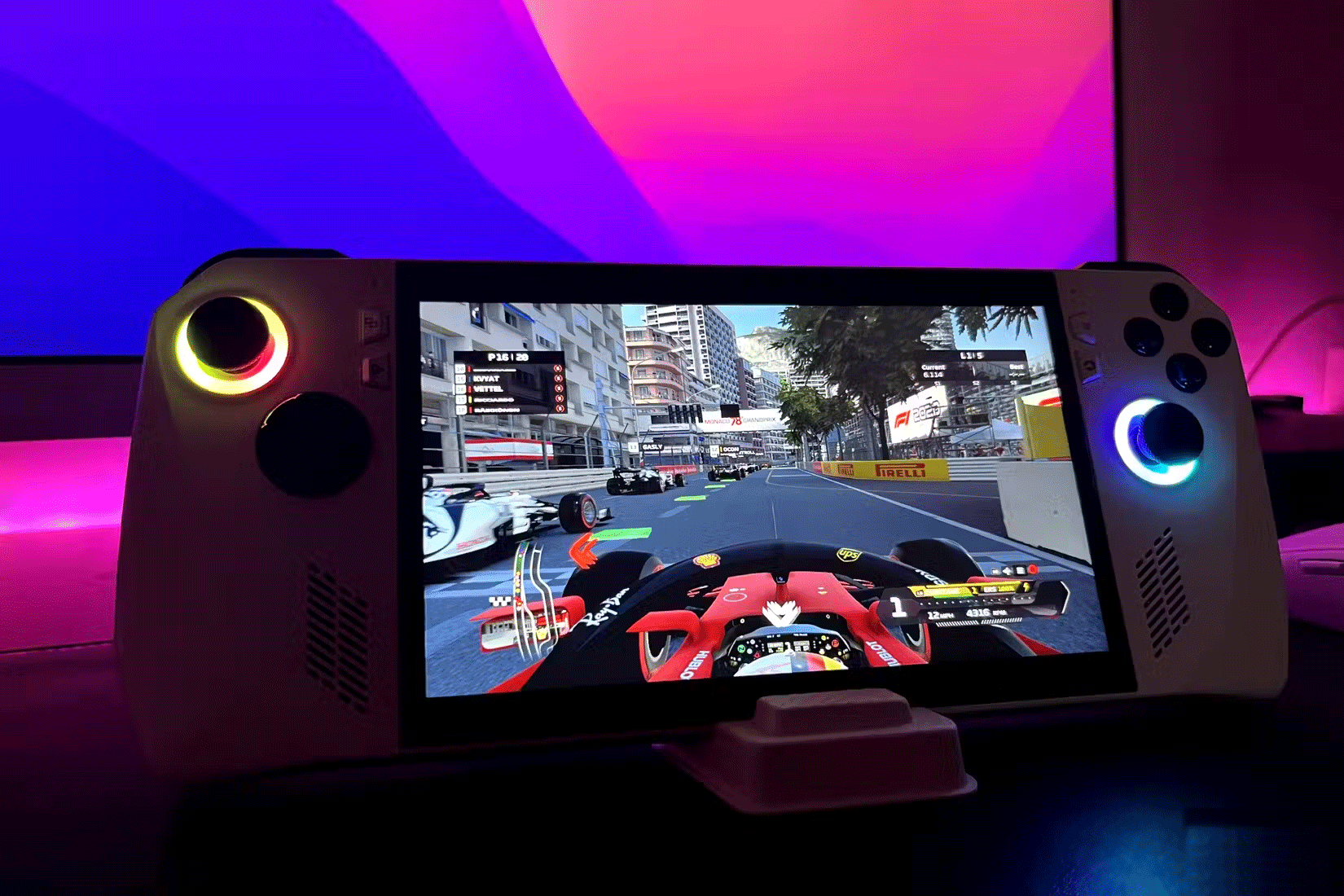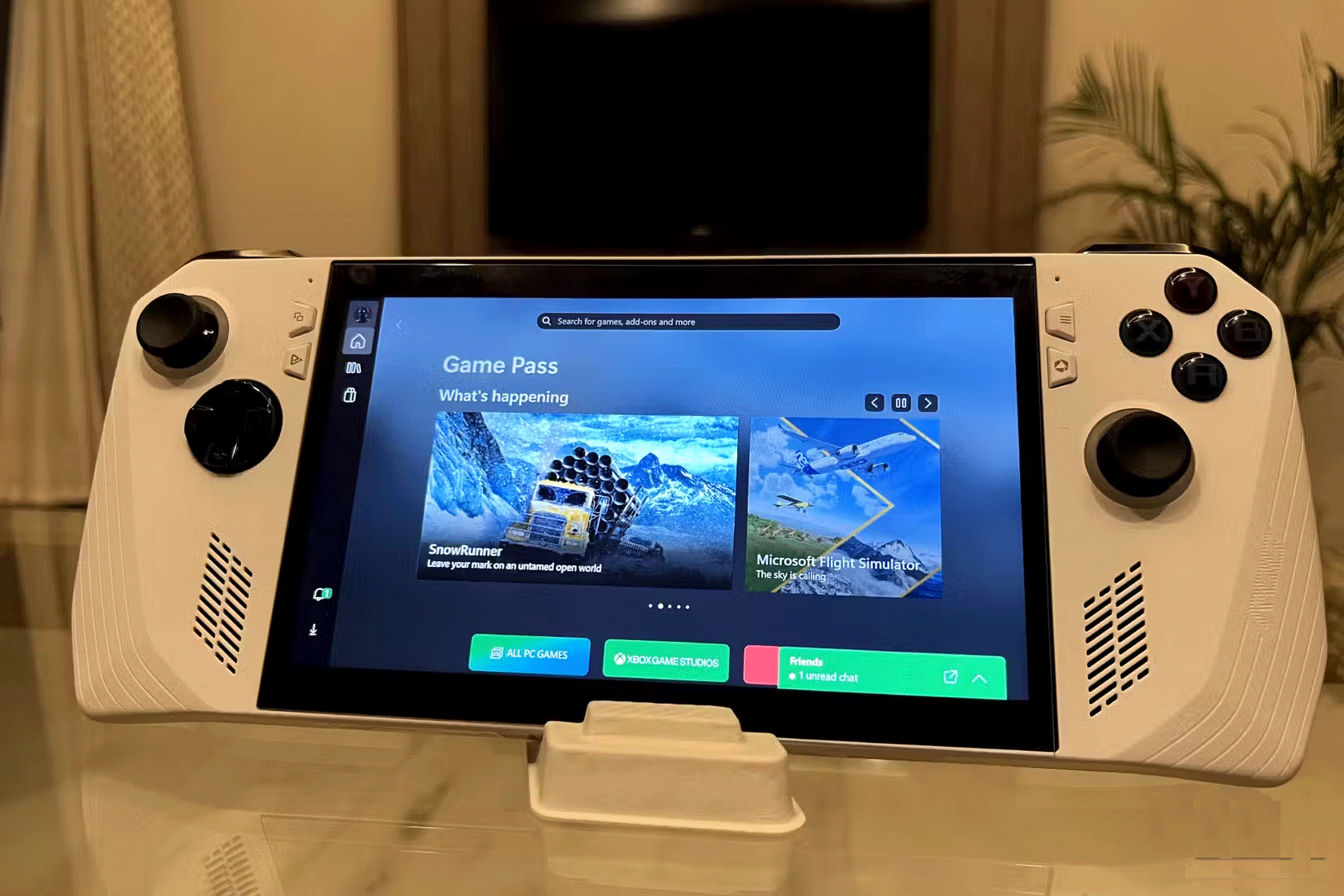Why buy Asus ROG Ally instead of Steam Deck OLED?
1. Better performance

Both devices are designed for gaming, so performance is key. While the Steam Deck was impressive when it first launched, the refreshed OLED Steam Deck doesn't offer much in the way of improvements. It's still based on AMD's old Zen 2 architecture, which is starting to show its age in many new games — and the outdated RDNA 2-based GPU doesn't help matters either.
On the other hand, the ROG Ally has the AMD Ryzen Z1 or AMD Ryzen Z1 Extreme, both of which are based on AMD's Zen 4 architecture. Both have higher core counts. If you're considering the Ally, you should go for the Z1 Extreme version as it offers a significantly more powerful GPU.
While you can expect a 10% to 40% increase in gaming performance on the Ally depending on the game and settings, the biggest advantage is the ability to hook it up to a monitor and comfortably play most games at 1080p resolution.
On a 7-inch screen, the difference between 1280x800 and 1920x1080 may not be a big deal, but when you connect it to a larger screen, the higher resolution makes a significant difference in overall image quality.
2. Has a 120hz screen
The ROG Ally also has a significantly better gaming display, with a 120Hz refresh rate compared to the Steam Deck OLED's 90Hz. This makes a big difference as games appear noticeably smoother at higher frame rates. It also supports Variable Refresh Rate (VRR), which allows the display to dynamically adjust its refresh rate to reduce screen tearing and stuttering, improving the overall gaming experience.
The Steam Deck OLED has a maximum resolution of 800p, while the Ally offers a full resolution of 1080p, meaning your games will look much sharper on the Ally. However, as the name suggests, the Steam Deck OLED has an OLED display, which offers much better contrast and deeper blacks. This makes a huge difference in visuals, especially in darker scenes.
If you're someone who primarily plays single-player games where response times aren't as important, you'll probably find the Steam Deck's OLED display much more vibrant and visually appealing. But for everyone else, the Ally's higher refresh rate and resolution are more important.
3. Wider game compatibility

Because ROG Ally runs Windows 11, it offers one of the best experiences when it comes to gaming compatibility. You can easily access any game launcher — whether it's Steam, Battle.net, Epic Games, or others — just like you would on a regular PC. If you're considering ROG Ally as a launcher to complement your existing gaming setup, you'll likely find the experience familiar and intuitive.
However, the Steam Deck OLED, which runs on SteamOS, a Linux-based operating system built on Arch Linux, is not. While SteamOS is capable in its own right, you may run into issues with certain games, especially those that rely on anti-cheat features, such as Valorant, Call of Duty: Warzone, and many other competitive games.
The biggest issue is that there is no Xbox Game Pass on SteamOS. While you can stream games via Xbox Cloud Gaming, installing and running games locally via Game Pass can be quite inconsistent and unreliable on Linux.
Since Steam is the primary launcher on the Steam Deck OLED, using other game launchers can also require a bit more effort. While the Steam Deck can be a desktop replacement like the ROG Ally, if you're used to Windows, you might have a bit of trouble adjusting to SteamOS.
4. Lighter and smaller
Since both devices are designed for handheld use, comfort and portability are key factors in why people choose the Asus ROG Ally. The OLED Steam Deck weighs about 32 grams more, which may not sound like much, but it makes a difference during long gaming sessions. The ROG Ally is also slightly smaller and more comfortable to hold.
If you have small hands, however, you may find the Steam Deck OLED easier to hold. The more pronounced curves on the back make it easier to hold. This isn't an issue with the ROG Ally.
The Steam Deck OLED has a lot of benefits as a gaming machine. For someone who primarily works on a Mac but occasionally needs Windows, the ROG Ally is a better fit.
You should read it
- 5 best ASUS ROG Ally docks in 2024
- SteamOS is coming to ROG Ally
- Asus VivoBook S15 review: A great, comprehensive experience
- ASUS Zenbook DUO (2024) UX8406 review: The Surface Neo we always wanted
- Asus VivoBook 14 laptop review: Meet the needs of everyday use
- Instructions for using Asus ZenFone for newbies
- Ultra-thin Asus U Series, 10-hour battery
- Review ASUS ROG Phone 5
May be interested
- Google Infinity Keyboard with 208 keys
 google japan has launched a quirky, joke-like version of its keyboard that features a double-sided mobius strip shape, instead of the familiar rectangle, to accommodate the 208 keys.
google japan has launched a quirky, joke-like version of its keyboard that features a double-sided mobius strip shape, instead of the familiar rectangle, to accommodate the 208 keys. - Fix AirPods automatically pausing music on iPhone quickly
 it's terrible when you're listening to music and it stops. let tipsmake help you fix airpods automatically stopping music on iphone!
it's terrible when you're listening to music and it stops. let tipsmake help you fix airpods automatically stopping music on iphone! - Latest Pet Simulator X 2022 Codes and How to Enter Codes
 pet simulator x code will help you collect gold coins and diamonds to buy eggs, then you can hatch to get legendary pets like unicorns or dragons.
pet simulator x code will help you collect gold coins and diamonds to buy eggs, then you can hatch to get legendary pets like unicorns or dragons. - Top 6 best free poster creation websites 2024
 the internet is a gateway to countless interesting tools and websites. from music cutters to graphic design, you will find it all here. and when it comes to poster design, the internet does not disappoint.
the internet is a gateway to countless interesting tools and websites. from music cutters to graphic design, you will find it all here. and when it comes to poster design, the internet does not disappoint. - Distinguishing Microsoft 365 and Office 2024
 at first glance, microsoft 365 and office 2024 may seem very similar, as they both give you access to microsoft's popular and widely used applications.
at first glance, microsoft 365 and office 2024 may seem very similar, as they both give you access to microsoft's popular and widely used applications. - How do astronauts drink coffee in space?
 just like us, astronauts working in space enjoy a cup of coffee every now and then.
just like us, astronauts working in space enjoy a cup of coffee every now and then.






 Learn about ASUS ROG Ally, a Steam Deck competitor
Learn about ASUS ROG Ally, a Steam Deck competitor 5 best ASUS ROG Ally docks in 2024
5 best ASUS ROG Ally docks in 2024 The 5 best SSDs for Steam Deck
The 5 best SSDs for Steam Deck Valve's Steam Deck handheld game console, $400, can play PC games
Valve's Steam Deck handheld game console, $400, can play PC games The new ROG Ally X fixes handheld gaming's biggest problem
The new ROG Ally X fixes handheld gaming's biggest problem